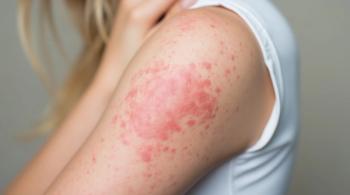
Neighborhood Conditions, Social Vulnerability Linked to Asthma Among Children
Higher neighborhood-level opportunity and social vulnerability measures were associated with pediatric asthma incidence, a new study has found.
High and very high neighborhood opportunity during early life were associated with lower childhood
Although prior studies have found a connection between neighborhood factors and pediatric asthma, few studies have examined the extent to which these neighborhood conditions during early stages of life may affect long-term health outcomes.
“In this nationwide multicohort study, we found that residence in neighborhoods with high and very high opportunity during early life was associated with lower subsequent childhood asthma incidence, which appeared to be attributable to the health and environmental and the social and economic domains but not the education domain,” wrote the researchers of the study.
The full study is published in
The study included data of multiple cohorts of patients at different vulnerable early life stages with asthma between January 1, 1995, and August 31, 2022, with at least 1 high-quality geocoded residential address. Patients enrolled in the study were followed up to the date of asthma diagnosis, date of last visit or loss to follow-up, or age 20 years.
Using Poisson regression models, the researchers were able to analyze the estimated asthma incidence rate ratios (IRRs) associated with neighborhood factors, including census tract-level Child Opportunity Index (COI) and Social Vulnerability Index (SVI) at birth (year of residence, 1995-2017), during infancy (median [IQR] age, 1.45 [1.36-1.48] years), or during early childhood (median age, 4.73 [4.29-4.76] years).
COI and SVI were grouped into very low (less than 20th percentile), low (20th to less than 40th percentile), moderate (40th to less than 60th percentile), high (60th to less than 80th percentile), or very high (80th or higher) categories.
A total of 10,516 children were included in the analysis, and their median age at follow-up was 9.1 (7.0-11.6) years. Of these patients, 20.6% lived in neighborhoods with very high COI and very low SVI.
The overall rate of asthma incidence was 23.3 cases per 1000 child-years (median age at asthma diagnosis, 6.6 [4.1-9.9] years).
Compared with very low COI, high and very high COI were associated with lower subsequent asthma incidence, regardless of sociodemographic factors, parental asthma history, and parity. For instance, the adjusted internal rate of return for asthma was 0.87 (95% CI, 0.75-1.00) for high COI at birth and 0.83 (95% CI, 0.71-0.98) for very high COI at birth compared with very low COI.
The researchers believe these associations may be attributable to the health and environmental domain and the social and economic domain of the COI. Furthermore, SVI during early life was not significantly associated with asthma incidence. Compared with a very high SVI, the adjusted IRR for asthma was 0.88 (95% CI, 0.75-1.02) for low SVI at birth and 0.89 (95% CI, 0.76-1.03) for very low SVI at birth.
The researchers acknowledged some limitations to the study. First, the data relied on a parent or caregiver report of physician-diagnosed asthma, which may have been subjected to recall bias. Secondly, the census tract data may not have captured relevant areas where children spend most of their time.
Despite these limitations, the researchers believe the study shows living in neighborhoods with high and very high levels of opportunity may be associated with lower asthma prevalence during childhood.
“Our findings highlight the need for future studies examining whether investing in health and environmental or social and economic resources in early life promotes health equity in pediatric asthma,” wrote the researchers. “Given the long-term association of childhood asthma with adult health, additional research is warranted to investigate whether strategies that alter specific neighborhood components would be effective in preventing childhood asthma.”
Reference
Aris IM, Perng W, Dabelea D, et al. Neighborhood opportunity and vulnerability and incident asthma among children. JAMA Pediatrics. Published online August 28, 2023. doi:10.1001/jamapediatrics.2023.3133
Newsletter
Stay ahead of policy, cost, and value—subscribe to AJMC for expert insights at the intersection of clinical care and health economics.















































